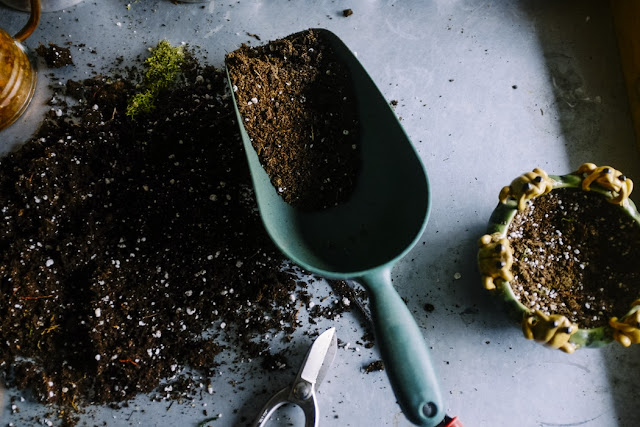Let’s talk about veggie bowls. I’m not talking about the glass or wooden bowl sitting in your kitchen cabinet that you serve lettuce in. I’m talking about bowls or pots that you can grow your own lettuce in.
You can repurpose an old traditional salad bowl to grow your lettuce in. Glass bowls don’t work as well since it’s impossible to add drainage holes in the bottom. Your wooden bowls should work well though as do ceramic planter bowls or even pots you’re no longer using for potted plants.
The basic idea is simple. You get a bowl or pot, fill it with potting soil, and plant your salad and salad fixings. A salad or lettuce bowl can include several different varieties of lettuce and a few of your favorite herbs. Or you can divide everything up in several different containers and grow a small tomato plant and a few green onions as well. Mix and match as you see fit, depending on what you like to eat.
That’s the fun of growing your own food. You can try different varieties and combinations until you come up with the one that works best for you. Along the way, you get to sample and try different varieties of lettuce your local market doesn’t offer. There’s so much more than iceberg lettuce and spinach out there.
Salad bowls are small and compact way to give gardening a try. They are also an excellent tool to help teach your children about where our food comes from and how it is grown. Get the little ones involved in planting and caring for the lettuce plants. Not only is it a great learning experience, it’s also a wonderful way to get them to eat more greens. After all, they’ve grown this lettuce.
Lettuce plants don’t have very deep roots, which is why shallow bowls work perfectly for planting them indoors. And since it won’t get super-hot - even in a sunny window- you don’t need a large amount of soil to retain moisture. In other words, shallow bowls are a great way to grow a large amount of lettuce in little space or soil.
To get started, get a nice shallow planting bowl and a bag of quality potting soil that includes a slow release fertilizer appropriate for vegetables. Or if you’re composting already, well-aged compost would make a rich organic way to fertilize your lettuce. Get them started, watch them grow and harvest once they grow to maturity.
One last thing, keep them away from your dachshunds. Mine dug up my garden searching for radishes and collards the other day. They are relentless in the hunt for veggies. But if you can keep it away from them, breathe in, eat and enjoy!
After the clean up, as I was gearing up to plant some basil for my window sill, I looked over and thought, "those starts better take off quickly. Not for my salad bowl, but for my urban garden. My favorite way to garden is a convenient vertical aeroponic growing system. Easily grow almost any vegetable, herb, or flower and many fruits at home with 90% less space and water and in a fraction of the time compared to conventional gardening. It’s perfect for urban settings—rooftops, patios, balconies, terraces—or just about any relatively sunny place outside.
After the clean up, as I was gearing up to plant some basil for my window sill, I looked over and thought, "those starts better take off quickly. Not for my salad bowl, but for my urban garden. My favorite way to garden is a convenient vertical aeroponic growing system. Easily grow almost any vegetable, herb, or flower and many fruits at home with 90% less space and water and in a fraction of the time compared to conventional gardening. It’s perfect for urban settings—rooftops, patios, balconies, terraces—or just about any relatively sunny place outside.
So what’s aeroponic? People get very confused when I first mention this to them. Aeroponics is the process of growing plants in an air or mist environment without the use of soil. It uses both water and air to produce more colorful, better tasting, better smelling, and incredibly nutritious fruits and vegetables. Compared to hydroponic growing, aeroponics is a technological leap forward from traditional hydroponics. Aeroponics is sometimes considered a type of hydroponics, as it does use water to transmit nutrients to plants and thus requires no soil. Technically, however, true hydroponics uses water as the growing medium; aeroponics has no growing medium. Best of all, the dachshunds don't hunt it.

































0 comments:
Post a Comment